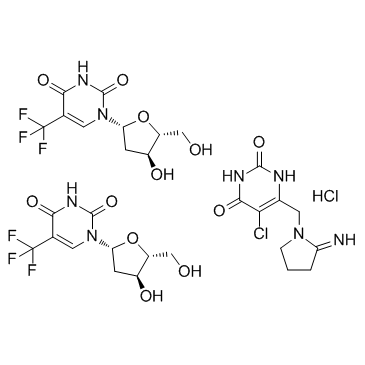| DC9692 |
Volitinib(Savolitinib)
|
Savolitinib(Volitinib; AZD-6094; Volitinib) is an orally bioavailable inhibitor of the c-Met receptor tyrosine kinase(IC50= 5 nM) with potential antineoplastic activity. |
| DC9574 |
A-317491 (sodium salt hydrate)
|
A-317491 is a non-nucleotide P2X3 and P2X2/3 receptor antagonist, which inhibits calcium flux mediated by the receptors. |
| DC9545 |
Miglustat (hydrochloride)
|
Miglustat hydrochloride is an inhibitor of glucosylceramide synthase, primarily to treat Type I Gaucher disease (GD1). |
| DC9542 |
MPTP (hydrochloride)
|
MPTP HCl induced reduction in the DOPAC HVA/dopamine (DA) ratio and increase in striatal ascorbate (AS) oxidation in rats |
| DC9536 |
Sertindole
|
Sertindole, a neuroleptic, is one of the newer antipsychotic medications available. |
| DC9505 |
Pifithrin-α (hydrobromide)
|
Pifithrin-α is an inhibitor of p53, inhibiting p53-dependent transactivation of p53-responsive genes. |
| DC9459 |
SB 415286
|
SB 415286 is a potent and selective cell-permeable, ATP-competitive inhibitor of GSK3α with an IC50 value of 78 nM (similar potency for GSK3β) and a Ki value of 31 nM. |
| DC9442 |
PF-04457845
|
PF-04457845 is a potent and exquisitely selective inhibitor of FAAH, with an IC50 of 7.2 nM, and both analgesic and antiinflammatory effects in animal studies comparable to naproxen. |
| DC9402 |
Letermovir
|
AIC246 is a novel anti-CMV compound which targets the viral terminase complex and remains active against virus resistant to DNA polymerase inhibitors. |
| DC9388 |
RS 504393
|
RS 504393 is a selective CCR2 chemokine receptor antagonist (IC50 values are 98 nM and > 100 μM for inhibition of human recombinant CCR2b and CCR1 receptors respectively). |























